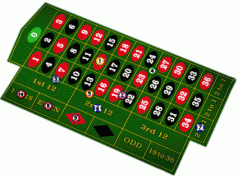In addition to facial expressions, hand jitters, nervous talking, betting patterns are the foremost tell of a poker player and the only tell in the case of online poker players. How an opposing player bets a particular hand can, in which position, by how much, check calls/raise, can reveal a lot of information about the player and in turn permits you to put him on a narrow range of possible hands.
Getting an initial read
Because you had never played with any of the players at the table and therefore have no information about their betting patterns. For this reason you should always sit back the first round and ideally until every player has played a hand. Take notes every single player:
- How do they bet chips in early/middle/late position? A player that always folds or limps in early or middle position is a tight player and you should avoid confrontation as much as possible unless you’re holding a premium hand. On the other hand if you notice a player is always raising or re-raising in late position, you should call him with any A-x because most of the time he’ll be holding marginal hands like K-x, Q-x.
- How do they play the small blind? If a player only completes the big blind or folds when in the small blind it’s a sign of tightness.
- How do they play the big blind? Many players intend on defending their blind regardless of the hand they’re holding. If you notice a player constantly re-raises on the BB don’t be afraid to call if you’re holding a decent hand.
- Do they check call/raise? A check-call tells you a person is unsure of where they stand. This can easily be exploited by a raise on the next street. A pattern of check raising however is a sign of a strength and this type of player should be avoided because he can easily slow play A-A as he can bluff with 7-2.
The first round will obviously not give you much information but it is a good start. It’s important to constantly observe the other players even if you’re not involved in a hand.
As the game or tournament progresses therefore you see more showdowns you can apply the information you have collected and start establishing a betting pattern. You can answer questions such as:
- Do they constantly bluff in an attempt to steal the pot?
- Do they chase draws past the flop?
- Do they slow play strong hands?
Now you’re ready to associate players with a particular betting pattern.
Raise-Check-Fold
This is a betting pattern commonly used by beginner players. They will raise pre-flop with A-x, check the flop when they don’t hit their Ace and fold to any raise. Isolate this player all-in pre-flop when you have a monster starting hand.
Raise-Raise-Check
This player raises pre-flop with a strong hand and makes a continuation bet on the flop even if he’s missed the flop. If the turn doesn’t bring his card he’ll check. The key here is to re-raise this player on the flop to avoid him from seeing a cheap turn.
Call-Check-Raise
A call before the flop, a check on the flop and a raise if anyone bets. This sort of player will often slow play strong hands, but will also use this betting pattern to mask a bluff. The latter is used more by experienced players and you won’t see this pattern often in the $0.50/$1 games.
Call-Check/Call-Raise
A variation of the above pattern, this player calls before the flop, checks on the flop and calls a bet or raise, and will wait until the turn to raise. This sort of betting pattern is usually associated with drawing hands. If you spot this pattern be sure to raise significantly on the flop to push the player off his hand and be careful on the turn.
While the bulk of this article focused on other player’s betting patterns, you should analyze your own betting patterns and in turn alternate them in a bid to confuse your opponents and not let them peg you to a specific betting pattern.








Everyone loves what you guys are up too. This kind of clever work and exposure!
Keep up the terrific works guys I’ve included you guys to blogroll.